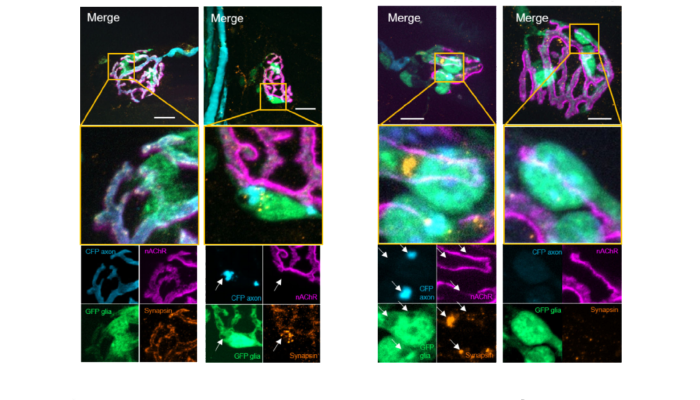Guillain-Barré syndrome treatment should be dependent on the individual patient
Published: 27 April 2020
Research conducted by Institute of Infection, Immunity and Inflammation scientists demonstrates the relative importance of different cell types in clearing up debris after peripheral nerve damage in the autoimmune disease.

Research conducted by Institute of Infection, Immunity and Inflammation scientists has emphasised the need for patient-specific treatment for sufferers of Guillain-Barré syndrome.
Guillain-Barré syndrome is a very rare and serious condition that affects the nerves, mainly affecting the feet, hands and limbs, and causing problems such as numbness, weakness and pain.
It can be treated and most people will eventually make a full recovery, although it can occasionally be life-threatening and some people are left with long-term problems
The paper, published in the Journal of the Peripheral Nervous System, demonstrates the relative importance of different cell types in clearing up debris after peripheral nerve damage in the autoimmune disease.
In patients, macrophages are known to contribute to nerve damage and also to clearance of nerve debris, which is vital as it allows for regrowth and recovery of the nerve, in the part of the nerve closest to the spinal cord.
In their model of the disease, which targets the nerve at its furthest point from the spinal cord, the neuromuscular junction, Institute scientists demonstrate that macrophages are not the major cell type involved in clearance.
The neuromuscular junction is a very specialised area in many respects. One of these specialisations is the presence of glial cells, called perisynaptic Schwann cells.
The study shows that these cells appear to be sufficient at clearing damaged nerves in models of Guillain-Barré syndrome, with little macrophage contribution.
This implies that treatments that may be aimed at targeting macrophages may not be useful in patients who have damage to these areas of the nerve.
Lead author Dr Madeleine Cunningham said: "We initially set out to investigate the role of macrophages in our models of Guillain-Barré syndrome, only to find that, when the neuromuscular junction is targeted, macrophages in fact don’t appear to have a role at all!
"To me, this further emphasizes the wide variation in types of injury which can occur in Guillain-Barré syndrome and that treatment should be dependent on the individual patient.
"Treatment options are very limited in this disease currently and new therapies need to keep these differences in injury location in mind."
This research was funded by a Wellcome Trust grant.
First published: 27 April 2020

